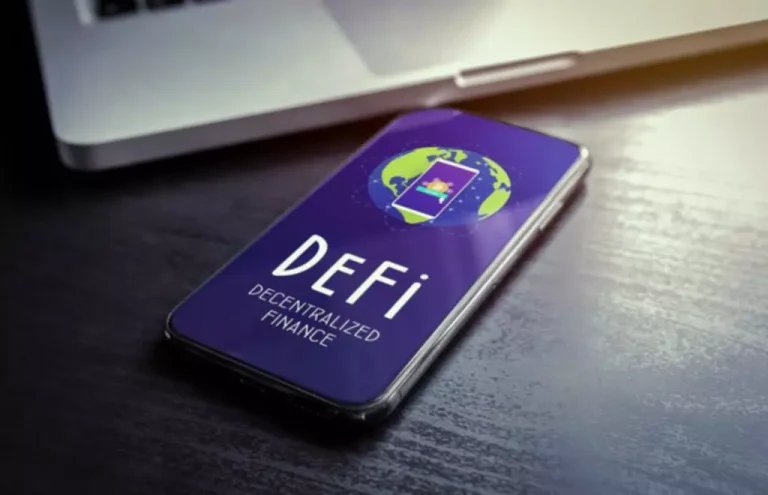Staking is concerned with providing security to a blockchain network, whereas liquidity mining is concerned with providing liquidity to the DeFi protocol. The liquidity mining protocol gives users a Liquidity Provider Token in exchange for the trading pair. Aside from the LP token they received, users are also rewarded with native or governance tokens, as long as their tokens remain in the liquidity pool. These newly generated tokens give them access to the project’s governance and may be traded for greater rewards and even other crypto assets. Liquidity mining is necessary because a DEX needs liquidity to allow trading between different token pairs.
International Lithium Announces Engagement of Red Cloud Securities – InvestorsObserver
International Lithium Announces Engagement of Red Cloud Securities.
Posted: Wed, 04 Oct 2023 15:39:00 GMT [source]
An operational crypto liquidity pool must be designed in a way that incentivizes crypto liquidity providers to stake their assets in a pool. That’s why most liquidity providers earn trading fees and crypto rewards from the exchanges upon which they how does liquidity mining work pool tokens. When a user supplies a pool with liquidity, the provider is often rewarded with liquidity provider (LP) tokens. LP tokens can be valuable assets in their own right, and can be used throughout the DeFi ecosystem in various capacities.
What is Liquidity Mining? DeFi Beginner’s Guide
As such, the DeFi space benefits by introducing to holders interesting and innovative projects to invest in and earn passive income. When you allocate your assets into the liquidity pool for ETH-DFI, you contribute an equal value of ETH and DFI to the pool, so 1 ETH + 1,000 DFI. Its main difference with the usual mining we know is that users must not have a platform or software to mine.
Suppose there is a DeFi protocol that allows users to trade between two tokens, Token A and Token B. To enable trading, the protocol requires liquidity in the form of both tokens. LPs can provide liquidity by depositing equal amounts of Token A and Token B into the liquidity pool. Your LP tokens can, essentially, be farmed for rewards provided by the DEX as a way to repay you for solving a liquidity issue. One strategy, for example, is to introduce auto-compounding farms where the aforementioned rewards will be reinvested into liquidity pools. Liquidity providers (LPs) are those people who add funds to a crypto liquidity pool.
A Pool of Funds
And this could open up the field of digital assets to a lot more people. In today’s world, where everything is online, millions of people are using their computers every single day. This material should not be construed as a basis for making investment decisions or as a recommendation to participate in investment transactions. Trading digital assets may involve significant risks and can result in the loss of invested capital. Therefore, you must ensure that you fully understand the risk involved, consider your level of experience, investment objectives, and seek independent financial advice if necessary.
You deposit your funds that the bank utilizes to credit loans to others, paying you a fixed proportion of the interest gained. There are several decentralized exchanges that incentivize liquidity providers to participate within their platforms. The most popular are UniSwap and Balancer, which support Ethereum and Ether-related tokens on the ERC-20 standard. PancakeSwap is another popular DEX where you can liquidity mine with support for Binance Smart Chain-based assets.
Weekly Finance Digest
By staking your cryptocurrency, you can earn additional coins as a reward for supporting the network, which can provide a passive income stream. The amount of cryptocurrency you can earn through staking varies depending on the specific cryptocurrency and the amount you stake, but it can be a profitable way to put your crypto assets to work. In essence, liquidity providers are traders who place their crypto tokens on DEXs to earn transaction fees. Decentralized exchanges do not require an intermediary organization to clear transactions. Instead, they rely on self-executing smart contracts to facilitate trading.
CTokens are a form of derivatives that derive their value from the base asset deposited by the lender. The value of these cTokens increases over time as it accumulates the amount of interest. Liquidity mining is becoming increasingly popular amongst crypto investors for a good reason. The system eliminates the control of banks and institutions over money, financial products, and financial services.
Can You Lose Money with Liquidity Mining?
These transactions often occur at a lower price than what centralized crypto exchanges can offer. A liquidity pool is a collection of funds locked in a smart contract on a DeFi platform where anyone can deposit their assets and receive rewards in exchange for providing liquidity to the platform. Let us understand this with the help of an example of a Decentralised Exchange (DEX), i.e., Uniswap.

However, like any investment, it is important to carefully consider the risks and do thorough research before participating in liquidity mining. Liquidity pools are locked in a smart contract and used to facilitate trades between assets on a DEX. In staking, the user’s tokens are not being used for liquidity provision, so there is no impact on the market’s liquidity. In yield farming and liquidity mining, the user’s tokens are used to provide liquidity to decentralized exchanges, which can impact the market’s liquidity.
Yield Farming vs. Staking vs. Liquidity Mining
The larger the price gap, the more likely there is to be a temporary loss. The Ethereum network is the most popular blockchain for smart contracts right now. It employs the proof-of-work (POW) consensus, which needs processing fees, i.e., gas costs, despite plans to migrate to the proof-of-stake (POS) consensus.
